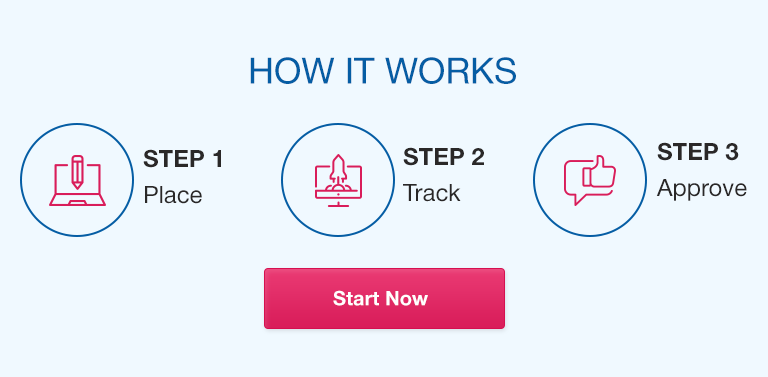Answer all of the following questions using headers to separate topics.
- Attack or defend the following statement and then explain what you would do, in concrete terms, to improve things in your involvement or what you have observed. “It seems that the people behind the new computerized systems perceive that the people who work here and the roles they play are to make the computer’s job easier as opposed to the systems being here to help transform average healthcare workers into super workers.”
- It has been argued that getting nursing involved in the implementation of all of the computer systems in healthcare is a good thing, but doing that is in conflict with current patient care and the reality that many nurses are uncomfortable with some of the changes they see and would rather not be involved. To what extend does this resonate with your personal experience? What do you believe are the key prerequisites that must be addressed before enough of the right nurses and other key role players in the healthcare process and what concrete steps would you recommend to address these and why?
- Chapter 5 in the text provides a perspective for implementing Clinical Information Systems. From your experience, what are the more critical issues or concerns you have with the material presented in this chapter and what would you advocate should be done to improve the likelihood that such projects would be successful. (You can address technical issues, skill issues, change and fear issues, as well as business and/or leadership issues.)
- Chapter 6 focuses on the Electronic Medical Records and physician adoption and utilization. Reflect on your experiences with physicians and other key, scarce, and therefore costly healthcare professionals. How well do you believe these professionals would react to the kinds of changes and approaches covered in the chapter. Have the authors done a good job addressing the really key issues and concerns? If not what did they miss? To what extend do you believe what is advocated would work in your environment or healthcare facilities with which you are familiar? Sketch what you might propose be done differently, if anything.
Expert Solution Preview
Introduction:
In this response, I will address each question separately, providing my thoughts and suggestions based on my experience as a medical professor. I will analyze the statements presented in each question and provide concrete steps that could be taken to improve upon the issues mentioned. It is important to note that these answers are solely based on hypothetical situations and personal opinions, and the actual implementation may vary depending on the specific context and needs of the healthcare system.
Question 1:
Attack or defend the following statement and then explain what you would do, in concrete terms, to improve things in your involvement or what you have observed. “It seems that the people behind the new computerized systems perceive that the people who work here and the roles they play are to make the computer’s job easier as opposed to the systems being here to help transform average healthcare workers into super workers.”
Answer:
I would defend the statement to some extent, as it is common for healthcare professionals to feel overwhelmed or burdened by the implementation of computerized systems. However, I also believe that the primary goal of these systems should be to support and enhance the abilities of healthcare workers rather than replacing them.
To improve things in this situation, I would advocate for a comprehensive training program that focuses not only on the technical aspects of using computerized systems but also on the integration of these systems into the existing healthcare workflow. This training should highlight the benefits of the systems for both patients and healthcare professionals, emphasizing how they can improve efficiency, accuracy, and overall patient care.
Additionally, I would encourage open communication channels between the implementation team and the healthcare workers. Regular feedback sessions and forums where individuals can voice their concerns and suggestions would help address any resistance or hesitancy towards the new systems. By fostering a collaborative environment, healthcare workers and the implementation team can work together to ensure that the computerized systems truly support and empower the healthcare workforce.
Question 2:
It has been argued that getting nursing involved in the implementation of all of the computer systems in healthcare is a good thing, but doing that is in conflict with current patient care and the reality that many nurses are uncomfortable with some of the changes they see and would rather not be involved. To what extent does this resonate with your personal experience? What do you believe are the key prerequisites that must be addressed before enough of the right nurses and other key role players in the healthcare process, and what concrete steps would you recommend to address these and why?
Answer:
In my personal experience, I have observed a range of reactions among nurses regarding the implementation of computer systems in healthcare. While some nurses embrace the changes and actively engage in the implementation process, others may feel uncomfortable or overwhelmed.
To ensure successful involvement of nurses in the implementation, it is crucial to address certain prerequisites. Firstly, comprehensive training programs that cater specifically to the needs of nurses should be developed. These programs should focus not only on technical aspects but also on patient care considerations and workflow integration.
Moreover, creating a supportive environment where nurses feel safe to voice their concerns and provide feedback is essential. Regular communication channels, such as town halls or consultation groups, can be established to enable nurses to share their experiences and receive updates on the implementation progress. This will help nurses feel valued and involved in the decision-making process.
Additionally, providing ongoing support and resources, such as dedicated IT support staff and user-friendly documentation, can help address any technical challenges or issues that may arise. Empowering nurses with the necessary resources and knowledge will help build their confidence and comfort in utilizing computer systems as part of their daily practice.
Question 3:
Chapter 5 in the text provides a perspective for implementing Clinical Information Systems. From your experience, what are the more critical issues or concerns you have with the material presented in this chapter, and what would you advocate should be done to improve the likelihood that such projects would be successful?
Answer:
From my experience, one critical concern with implementing Clinical Information Systems is the resistance to change among healthcare professionals. The fear of technology or the perception that it may disrupt established workflows can hinder the success of such projects. Additionally, the lack of proper training and support for healthcare professionals during the implementation phase can also pose challenges.
To address these concerns, a multidisciplinary approach should be adopted. Engaging various stakeholders, such as physicians, nurses, IT experts, and administrators, from the early stages of the project can help ensure a comprehensive understanding of the requirements and potential barriers. This will also facilitate a sense of ownership and foster collaboration among key players.
Moreover, a robust training program tailored to the specific roles and responsibilities of healthcare professionals should be developed. This training should not only focus on technical proficiency but also highlight the benefits and long-term positive impact of Clinical Information Systems on patient care outcomes. Providing continuous support through dedicated IT teams or help desks can further alleviate concerns and enhance system utilization.
Lastly, effective change management strategies should be implemented, emphasizing the importance of clear communication, transparency, and addressing individual concerns. Regular feedback sessions, workshops, and informative materials can be utilized to keep healthcare professionals engaged and informed throughout the implementation process.
Question 4:
Chapter 6 focuses on the Electronic Medical Records and physician adoption and utilization. Reflect on your experiences with physicians and other key healthcare professionals. How well do you believe these professionals would react to the kinds of changes and approaches covered in the chapter? Have the authors done a good job addressing the key issues and concerns? If not, what did they miss? To what extent do you believe what is advocated would work in your environment or healthcare facilities with which you are familiar? Sketch what you might propose be done differently, if anything.
Answer:
Based on my experiences with physicians and other key healthcare professionals, I believe the reactions to changes in electronic medical records (EMRs) can vary. Some physicians may readily embrace technology and recognize the benefits it offers, while others may resist change due to concerns about usability, potential disruptions to patient care, or lack of training.
In terms of addressing key issues and concerns, the authors of Chapter 6 have done a commendable job. They have emphasized the importance of training, usability, integration, and the need for physicians to be active participants in the implementation process. However, one aspect that could have been further explored is the impact of varying levels of technological literacy among physicians. Providing tailored training programs and ongoing support for physicians at all skill levels can help bridge this gap and ensure optimal utilization of EMRs.
The extent to which the advocated approaches would work in a specific environment or healthcare facility depends on factors such as the existing technological infrastructure, resources, and the organizational culture. Therefore, a comprehensive assessment of these factors should be conducted before implementing any changes recommended in the chapter.
One proposal for improving physician adoption and utilization of EMRs would be to establish a physician champion or mentorship program. These champions, who have successfully integrated EMRs into their practice, can serve as role models and provide guidance to their peers. Additionally, developing user-friendly interfaces and ensuring interoperability between different systems can enhance physician satisfaction and increase their willingness to adopt and utilize EMRs in their daily practice.



